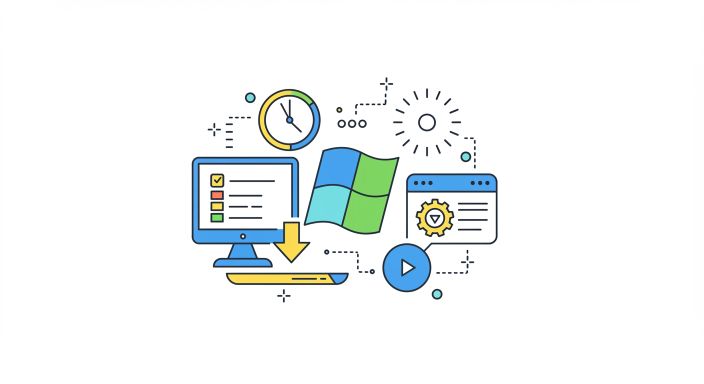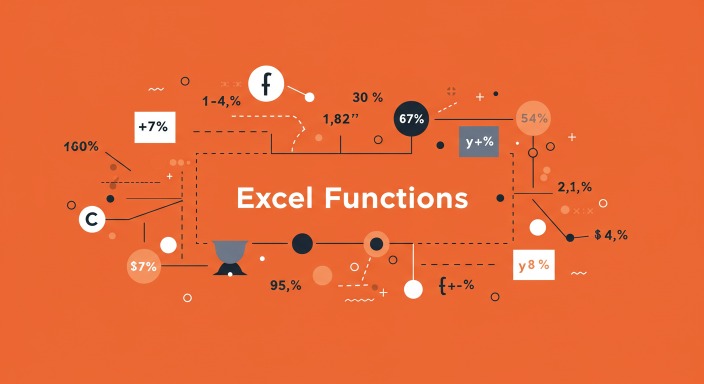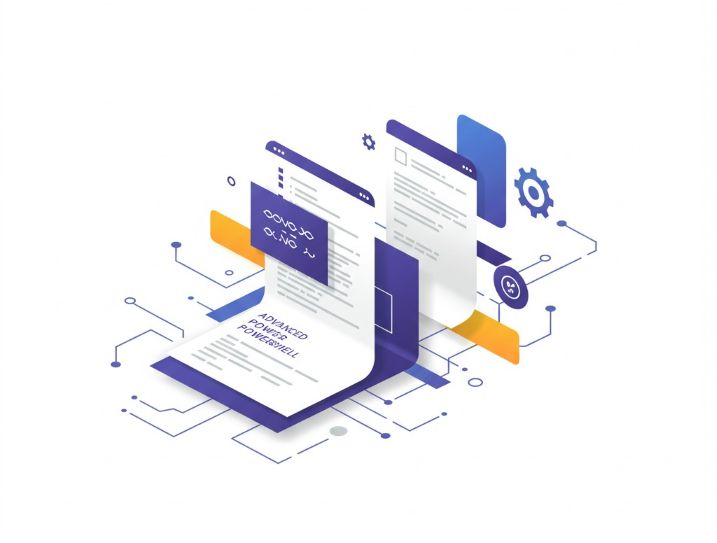Location

How to Fix Common Windows Update Issues in 2024
Windows updates are essential for keeping your system secure, efficient, and loaded with the latest features. But let’s be honest – they don’t always go smoothly. From endless loading screens to mysterious error codes, Windows Update issues can feel like a nightmare. Don’t worry, though; we’ve got you covered with this comprehensive guide to fixing common Windows Update problems in 2024.
Why Do Windows Updates Fail?
Before diving into the fixes, let’s understand the usual culprits behind Windows Update issues. Knowing the root cause can help you pick the best solution.
Common Reasons for Windows Update Failures
-
Internet Connectivity Problems A slow or unstable internet connection is one of the most common reasons Windows updates fail. Updates require downloading large files from Microsoft’s servers, and even a brief disruption can corrupt the download. Ensure your internet connection is stable, and consider switching to a wired connection or restarting your router if issues persist. If you’re on a metered connection, make sure the data cap isn’t restricting the download.
-
Insufficient Disk Space Windows updates require adequate storage space to download and install the necessary files. If your system drive is running low on space, the update may halt midway or fail altogether. Use the Disk Cleanup tool to clear out temporary files and consider transferring large files to an external drive or cloud storage. Always aim to have at least 20GB of free space on your primary drive to avoid storage-related update issues.
-
Corrupt System Files System files play a crucial role in executing updates, and any corruption or damage can disrupt the process. Corrupt files may stem from malware, unexpected shutdowns, or hardware failures. Tools like the System File Checker (SFC) and Deployment Image Servicing and Management (DISM) can help repair these files and restore the update functionality.
-
Conflicting Software Sometimes, third-party software, especially antivirus programs, can block or interfere with updates. These tools might mistakenly flag update components as threats, halting the process. Disabling your antivirus temporarily during the update or adding Windows Update to its exclusion list can resolve such conflicts. Similarly, other third-party system tools can also contribute to issues and may need to be uninstalled temporarily.
-
Pending Updates or Restarts Windows is designed to process updates in a specific order, and having multiple updates queued or a system restart pending can create conflicts. Restarting your computer ensures that all pending updates and changes are applied. Regular reboots can prevent this issue from snowballing into a larger problem, keeping your system ready for new updates.
How to Fix Windows Update Issues
Basic Troubleshooting Steps
Step 1: Check Your Internet Connection
Ensure you have a stable and fast connection. Restart your router or switch to a wired connection if possible.
Step 2: Free Up Disk Space
Delete unnecessary files using the built-in Disk Cleanup tool. Move large files to an external drive or cloud storage.
Step 3: Restart Your Computer
Sometimes, a simple restart can resolve pending updates or processes.
Advanced Troubleshooting for Persistent Issues
Step 4: Run the Windows Update Troubleshooter
- Go to Settings > System > Troubleshoot > Other troubleshooters.
- Select Windows Update and follow the on-screen instructions.
Step 5: Clear the Windows Update Cache
Use these steps to reset the update cache:
- Open Command Prompt as an administrator.
- Type:
net stop wuauserv
net stop bits
- Navigate to C:\Windows\SoftwareDistribution and delete its contents.
- Restart the services:
net start wuauserv
net start bits
Step 6: Repair Corrupted System Files
Use the System File Checker (SFC) tool:
- Open Command Prompt as an administrator.
- Run:
sfc /scannow
After SFC completes, run DISM to fix deeper issues:
dism /online /cleanup-image /restorehealth
Fixing Specific Windows Update Error Codes
Common Error Codes and Fixes
-
0x80070002 or 0x80070003 These errors indicate missing or corrupted update files. To fix this, clear the Windows Update cache by stopping the Windows Update and Background Intelligent Transfer Service (BITS) services. Navigate to the SoftwareDistribution folder (located at
C:\Windows\SoftwareDistribution) and delete its contents. Afterward, restart the services and retry the update. This process ensures that corrupted files are removed, and fresh files are downloaded. -
0x80240034 This error is typically caused by a failed download or installation attempt. Running the built-in Windows Update Troubleshooter can resolve this issue. The troubleshooter identifies and fixes problems automatically, such as network interruptions or incorrect update settings. Access it via Settings > System > Troubleshoot > Other troubleshooters and select Windows Update. Restart your system and try the update again.
-
0x800F081F This error indicates that the required .NET Framework components are missing or disabled. To fix this, enable the .NET Framework through the Windows Features menu. Go to Control Panel > Programs > Turn Windows Features On or Off, check the relevant .NET Framework boxes, and click OK. If the issue persists, manually download and install the .NET Framework from Microsoft’s official website.
-
0x80073712 This error points to missing or corrupted update files required for installation. Start by running the System File Checker (SFC) tool with the
sfc /scannowcommand to repair system files. Follow it up with the DISM tool using the command:
dism /online /cleanup-image /restorehealth
DISM scans and restores any damaged Windows image components, ensuring that the update process can proceed smoothly. After these steps, restart your PC and reattempt the update.
Pro Tip for Error Codes
Always note down the error code. A quick online search can lead you to a targeted fix.
Updating Windows Manually
Step-by-Step Guide
- Visit the Microsoft Update Catalog.
- Search for the specific update by its KB number.
- Download and install the update manually.
When Manual Updates Are Helpful
Ideal for failed automatic updates or specific missing updates.
Preventing Future Windows Update Issues
Keep Your System Clean
Regularly clean junk files and optimize your system.
Update Drivers
Use Windows Device Manager or trusted tools to keep drivers up-to-date.
Avoid Interrupting Updates
Ensure your device stays powered and connected during updates.
Enable Automatic Maintenance
Windows can automatically optimize updates during off-hours. Go to Control Panel > Security and Maintenance to set it up.
Conclusion
Windows Update issues can be frustrating, but they’re rarely unsolvable. By following these steps, you can troubleshoot and fix common problems like a pro. Keep your system clean, up-to-date, and prepared for future updates to ensure a smooth experience. Remember, staying patient and methodical is key when dealing with tech hiccups.
FAQs
1. Why does Windows Update take so long to install?
Large update sizes, slow internet connections, or low system performance can lead to delays. Ensuring a stable connection and optimizing your PC can help speed up the process.
2. Can I skip a Windows Update?
Yes, you can skip non-critical updates, but it’s not recommended. Skipping updates may leave your system vulnerable to security threats.
3. What happens if I interrupt a Windows Update?
Interrupting updates can result in corrupted files or an unstable system. Always let updates finish before shutting down your computer.
4. How do I check if a Windows Update is stuck?
If the progress bar hasn’t moved for hours or the system is unresponsive, the update might be stuck. Restarting your system can often resolve the issue.
5. Is it safe to delete the SoftwareDistribution folder?
Yes, deleting this folder’s contents is safe after stopping the Windows Update services. This action clears old update files and helps resolve issues.
6. Why do I keep seeing the same update?
This can occur due to incomplete installations or corrupted files. Clearing the update cache or manually installing the update can resolve the issue.
7. How do I pause Windows Updates?
You can pause updates via Settings > Windows Update > Advanced Options, where you’ll find an option to pause updates temporarily.
8. Do I need third-party tools for Windows Updates?
Generally, no. Built-in Windows tools are sufficient for most update-related tasks. However, advanced users may benefit from third-party tools for specific scenarios.
9. Can antivirus software block Windows Updates?
Yes, some antivirus programs may mistakenly flag update files as threats. Temporarily disabling the antivirus or adding Windows Update to the exclusion list can help.
10. How often should I check for Windows Updates?
Windows automatically checks for updates. However, manually checking once a week ensures you stay current with critical patches.



